JBtheExplorer
Native Gardener
Earth Day is a great time to do something to help protect and restore our planet and the species living on it. There are many ways that we as individuals can take part. Some go to their local park and pick up garbage, others limit their electricity usage. Here on the Gardening Forums, what better way to give back to our Earth than to plant species of plants that are native to our area?!
If you live in the United States, some of the most popular native plants are Orange Milkweed (Asclepias tuberosa), Swamp Milkweed (Asclepias incarnata), Purple Coneflower (Echinacea purpurea), & Black-eyed Susan (Rudbeckia hirta).
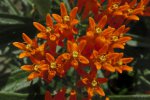
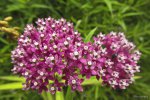

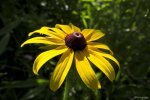
When it comes down to it, there are all sorts of bright and showy native plant species, like Blanket Flower, Blue-eyed Grass, and Liatris.
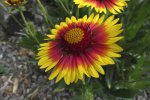
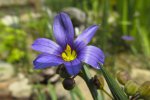
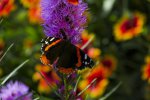
If you're new to native gardening, you can always start small. Even a section that's 3' by 3' will fit many native plants. Here, I have a 4' by 2.5' rounded garden section. There isn't much going on just yet, but by this Summer, it will be filled with color, and filled with all sorts of wildlife. Bees, Butterflies, Caterpillars, Beetles, Frogs, Toads, and even Birds will benefit from this small native garden.

Once I started gardening with native plants, I instantly wanted more. I was thrilled with all the wildlife I was seeing using my plants - the habitat I created for them - and I knew that they needed more, so I added more native gardens, and then more after that.
Collecting your native seeds in Autumn means you can expand your own garden for free. That's what I did last year, and again this past Winter. I also grew a few plants for relatives. It's great knowing my habitat is going to be apart of creating new small habitats in their yards as well, and I hope that continues to branch out to people they know.

Maybe, just maybe, 2016 will bring more habitat to the species that need it, and maybe you'll be apart of that! Consider planning your native garden today!
Happy Earth Day, everyone.
If you live in the United States, some of the most popular native plants are Orange Milkweed (Asclepias tuberosa), Swamp Milkweed (Asclepias incarnata), Purple Coneflower (Echinacea purpurea), & Black-eyed Susan (Rudbeckia hirta).




When it comes down to it, there are all sorts of bright and showy native plant species, like Blanket Flower, Blue-eyed Grass, and Liatris.



If you're new to native gardening, you can always start small. Even a section that's 3' by 3' will fit many native plants. Here, I have a 4' by 2.5' rounded garden section. There isn't much going on just yet, but by this Summer, it will be filled with color, and filled with all sorts of wildlife. Bees, Butterflies, Caterpillars, Beetles, Frogs, Toads, and even Birds will benefit from this small native garden.
Once I started gardening with native plants, I instantly wanted more. I was thrilled with all the wildlife I was seeing using my plants - the habitat I created for them - and I knew that they needed more, so I added more native gardens, and then more after that.
Collecting your native seeds in Autumn means you can expand your own garden for free. That's what I did last year, and again this past Winter. I also grew a few plants for relatives. It's great knowing my habitat is going to be apart of creating new small habitats in their yards as well, and I hope that continues to branch out to people they know.
Maybe, just maybe, 2016 will bring more habitat to the species that need it, and maybe you'll be apart of that! Consider planning your native garden today!
Happy Earth Day, everyone.




